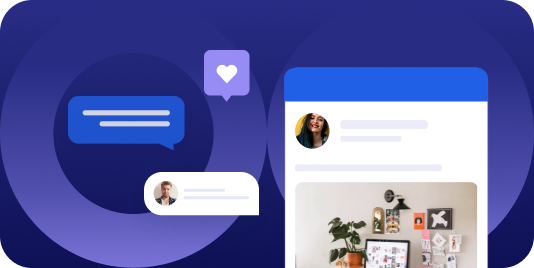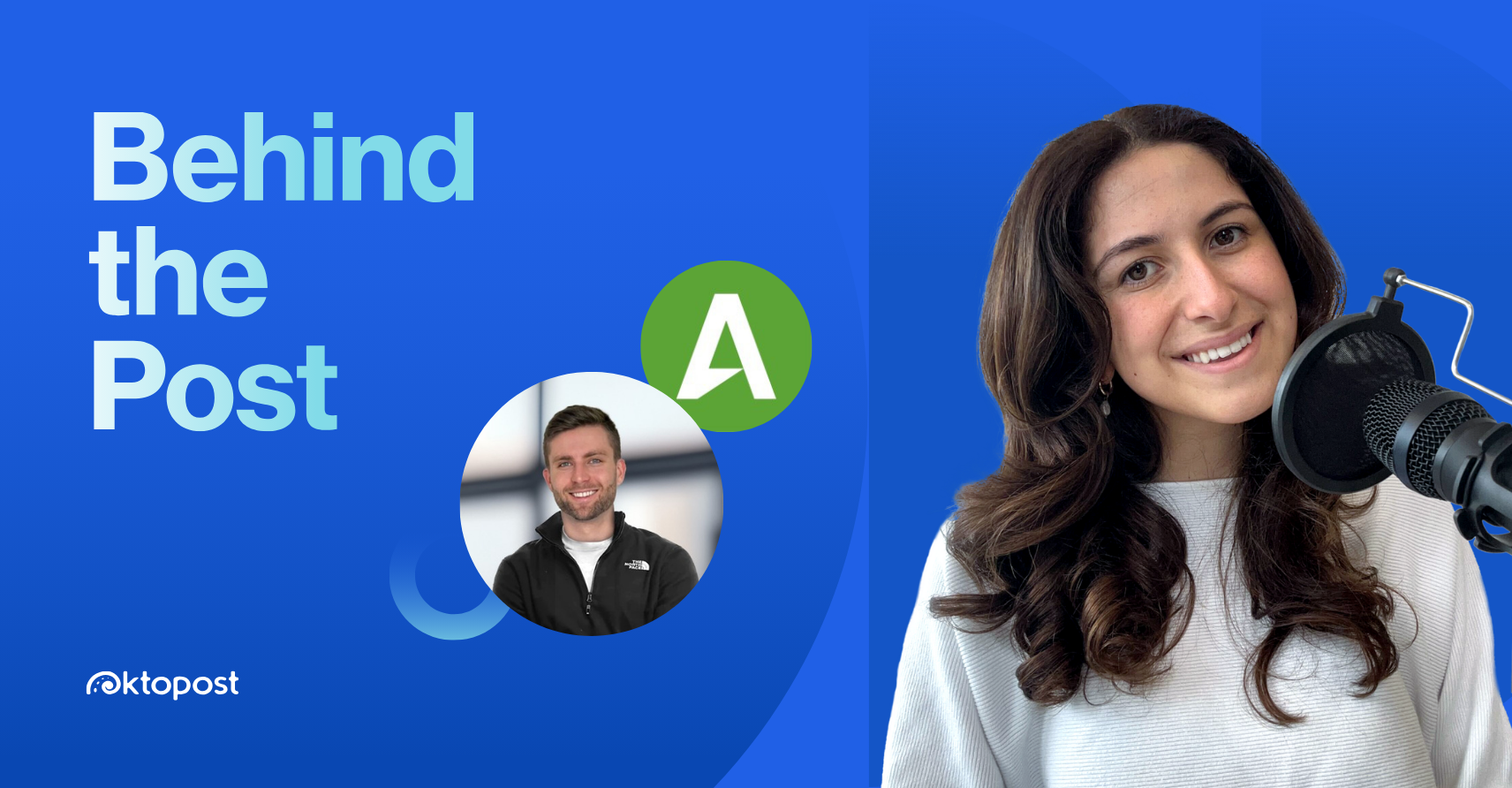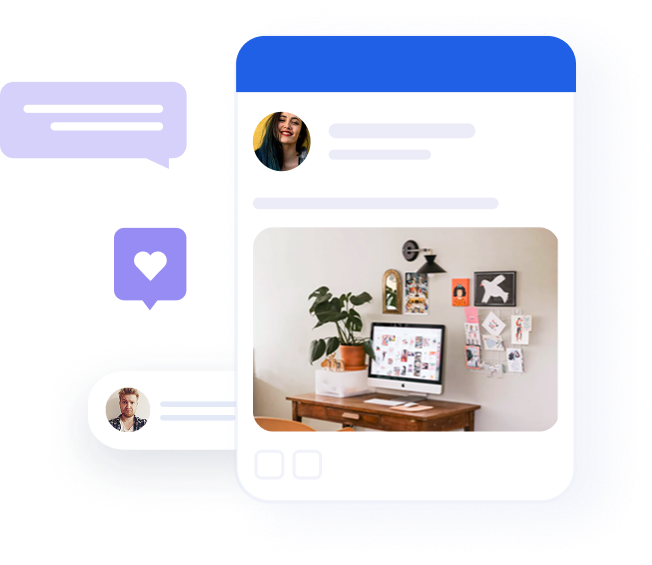AI, guided by marketing intelligence: The strategic SMM’s guide to weekly planning

Table of contents
- Wearing all the hats: Inside the modern B2B social media manager’s role
- Where AI helps, and where it doesn’t
- Marketing intelligence and marketing research: What’s the difference?
- The competitive advantage: Planning with industry insight
- A Sample weekly workflow for smarter planning
- Real results for SMMs and marketing leaders
- You don’t need a bigger team, just better insight
You’ve got four stakeholders in your inbox, five blank slots on your calendar, and zero new ideas. If that sounds familiar, you’re not the only B2B social media manager (SMM) going through this week in, week out.
For many B2B SMMs, content planning can feel like an endless game of catch-up. But what if you could stop guessing and start planning like a strategist?
In 2025, the smartest SMMs aren’t flying blind. They’re using a combination of AI and competitor intelligence to build weekly content calendars that deliver results the C-suite will notice.
This post explains how to do that and how tools like Oktopost help turn your calendar from a to-do list into a performance engine.
Wearing all the hats: Inside the modern B2B social media manager’s role
Social media managers today do far more than post on LinkedIn or schedule a tweet. They’re brand storytellers, data analysts, campaign planners, and internal collaborators. Juggling multiple channels, managing advocacy programs, creating reports, and maintaining a steady content cadence across paid and organic? That’s just Monday.
It’s understandable, then, that so many still plan content reactively. They look at last month’s performance and tweak what worked, hoping for similar results. But trends change weekly, and engagement windows are tight. Backward-looking planning like that may have been enough in the 2010s, but it no longer cuts it.
To truly lead in this space, SMMs need forward-looking insights. For that, they need access to accurate, always-on marketing intelligence that can access the most relevant sources in their market. In a field that moves faster than LinkedIn engagement drops on Fridays, marketing intelligence is a way to move from firefighting to making those genuinely insights-driven decisions every B2B executive wants their SMM to make.
Where AI helps, and where it doesn’t
Like everyone else, AI tools have become indispensable for social media managers. They use Large Language Models (LLMs) to brainstorm content themes and get that first draft on the page. AI saves time and sparks ideas. That’s all great for accelerating execution but doesn’t provide market visibility.
AI can’t tell you what’s resonating with your audience’s competitors. It won’t highlight which formats are trending in your industry or where gaps exist that your brand can fill. Look at it like an intern you are having a conversation with.
Marketing intelligence platforms provide the layer of insight AI lacks. They surface data on:
- Competitor activity
- Industry benchmarks
- Emerging trends
These are all things that an ambitious SMM can use to effectively guide content strategy, not just speed up its creation.
Recommended for further reading
Marketing intelligence and marketing research: What’s the difference?
While they sound similar, marketing intelligence and research serve different purposes. Understanding those differences can shape stronger, more data-driven decisions.
Marketing research is a slow, retrospective process. It’s typically used to gather customer feedback through surveys, interviews, and focus groups. It helps uncover customer needs or test messaging. This kind of research is essential when exploring market opportunities or evaluating strengths and weaknesses. But it’s not built for speed or agility.
Marketing intelligence, on the other hand, is continuous, real-time, and outward-looking. It collects content from competitor activity, social media trends, and broader market dynamics. When you collect marketing intelligence, you’re scanning your surroundings to see what’s working, where the gaps are, and how to respond through informed, strategic decisions, rather than hunches.
The competitive advantage: Planning with industry insight
Picture starting your week knowing:
- What your top competitors posted last week.
- Which posts saw the highest engagement?
- What content formats (carousels, polls, short videos) are trending?
- Where there’s a content gap, you can own.
SMMs indeed develop a knack for this. But it can never be completely accurate in the way that live links to those posts can help. And if you have that instinct, whether razor-sharp or still in the making, it’s better used for creating scroll-stopping content than guessing what worked for someone else.
Tools like Oktopost’s Marketing Intelligence handle the insight, so you can always focus on what’s next. They help SMMs understand what their competitors write about, what they should be writing about, and when. They can also differentiate their content from everyone else in the feed.
A Sample weekly workflow for smarter planning
Map It Out: What a week that you know what your competitors are up to looks like
To get started, here’s a sample weekly routine:
- Monday: Review competitor trends using a marketing intelligence dashboard.
- Tuesday: Use AI to ideate and draft content, including advocacy posts.
- Wednesday: Finalize and optimize your weekly calendar with a balanced mix of formats and messages.
- Thursday: Load your social publishing calendar and your Advocacy Board with relevant content for internal champions to share.
- Friday: Analyze early performance signals and adjust next week’s plan accordingly.
This routine turns weekly planning from a reactive chore into a strategic process.
Real results for SMMs and marketing leaders
Social media managers who use marketing intelligence don’t just plan faster—they plan smarter. They’re able to:
- Create content aligned with what’s resonating in their industry.
- Spot opportunities to lead conversations, not follow them.
- Present performance-backed strategies to leadership.
Let’s look at a few scenarios:
Scenario 1: A solo social media manager at a B2B SaaS company uses competitor trend reports to pivot their weekly content toward educational carousels. By focusing on topics their audience was already engaging with (like pricing transparency and integration how-tos), engagement jumps 40% in one month.
Scenario 2: A marketing director leverages Oktopost to benchmark their team’s performance against three major competitors. They identify a gap in thought leadership content, develop a new campaign, and see a welcome uptick in demo requests.
Scenario 3: A mid-sized team rolls out weekly planning rituals using AI and marketing intelligence. Instead of chasing every trend, they focus on the market trends that are working for their competitors. After a month, they’re spending less time churning and more time creating with purpose. They see a 30% boost in content output, but far less burnout than the month before.
Scenario 4: The social team of a pensions advisory service plans to scale its employee advocacy from 20 to 125 advocates. By pairing marketing intelligence with publishing and advocacy tools, they increase social media-driven website traffic by 268%, with advocacy posts driving 22% more link clicks than their corporate LinkedIn. Social media is now a strategic engine across their campaigns and a driver of measurable business impact.
You don’t need a bigger team, just better insight
In B2B, more posts don’t equal more impact. The most innovative B2B social strategies are based on well-informed creativity. Gathering marketing intelligence helps you stop guessing and start steering toward the formats, channels, and conversations that get results.
If your content plan could use a dose of business intelligence, Oktopost can help.
Explore how our Marketing Intelligence tools fit into more innovative marketing strategies, or cut to the chase and book a demo to see it in action.




